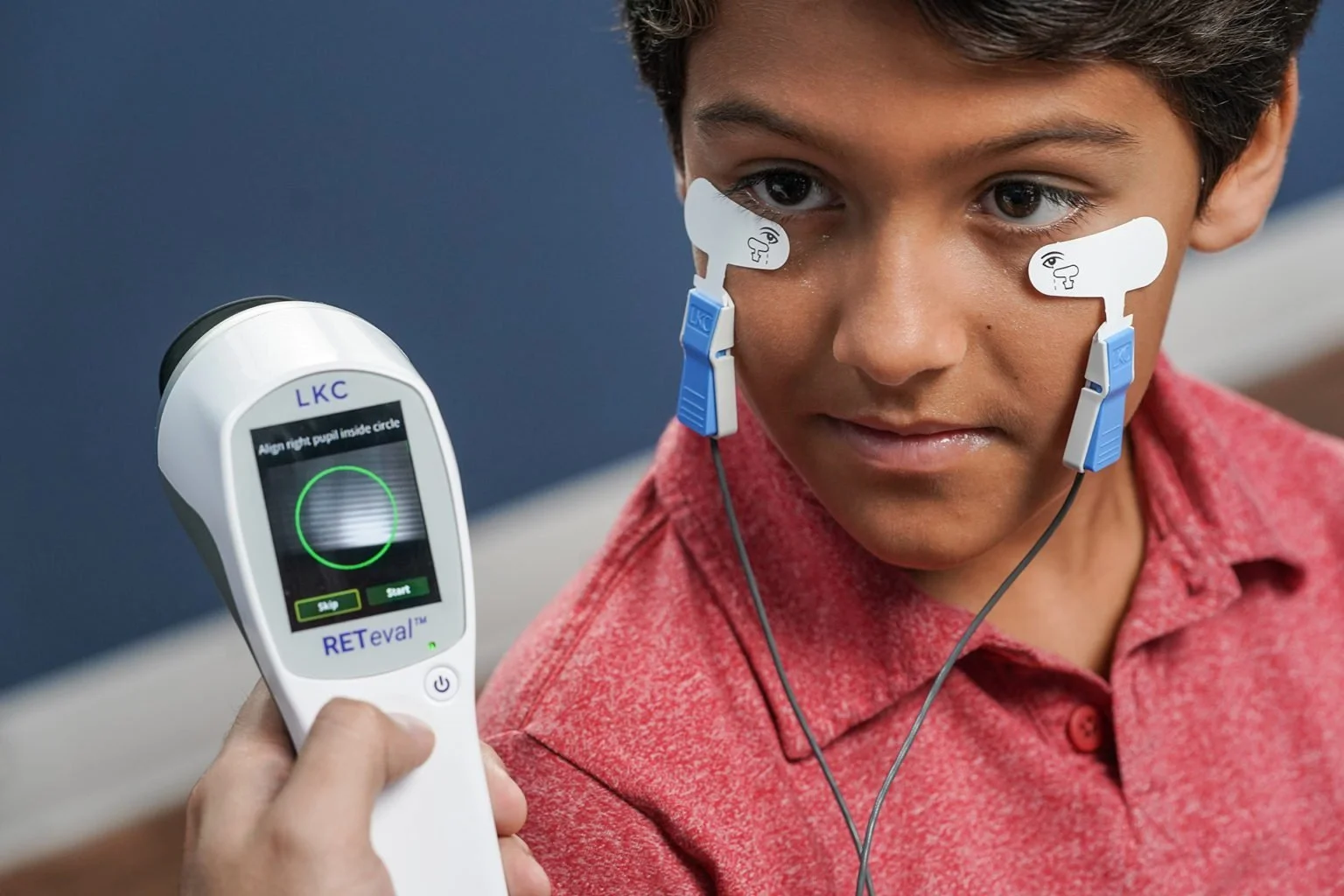DIAGNOSTIC TECHNOLOGY
Zeiss Clarus Ultrawidefield (UWF) retinal camera
The Clarus UWF retinal camera significantly enhances our diagnostic capabilities by capturing high-resolution images of the retina (back of the eye) in 1-2 quick captures for each eye. Conventional retinal cameras capture 30-45 degrees of retina, while the Clarus helps us record a much wider field of view of around 200 degrees of retina, enabling us to detect and monitor retinal conditions with much higher precision and confidence. From common retinal freckles, to tears and diabetic eye disease, the Clarus offers unparalleled clarity.
STRUCTURAL IMAGING OF THE EYE
Medmont Meridia
Medmont Meridia is a powerful tool that provides extremely detailed corneal topography, aiding in the accurate diagnosis and monitoring of corneal conditions such as keratoconus. This technology is also is essential for designing and fitting orthokeratology contact lenses which we are seeing more often with the rise in myopia. It also features a highly advanced dry eye diagnostic imaging including tear film stability assessment and infrared imaging for meibomian gland disease, which can cause common conditions such as dry eyes.
Nidek OCT (optical coherence tomography)
The Nidek OCT is a crucial diagnostic tool that allows for detailed cross-sectional imaging of the retina, optic nerve head, and anterior segment structures, similar to X-rays or ultrasound without the need for uncomfortable gels or harmful radiation. Our latest software update allows us to image the optic nerve and macula in a single scan, making it very child friendly. Its high-resolution scans aid in the early detection and monitoring of retinal diseases, glaucoma, and other ocular conditions, as well as monitoring for side effects from other systemic medications like Plaquenil and Gilenya.
Topcon MYAH optical biometry
Optical biometry is essential for detecting, monitoring and managing myopia (shortsightedness) progression. Myopia is typically due to axial (front to back) lengthening of the eye, and measuring the eye’s axial length is now recognised as the gold standard in determining progression of myopia. Research has also clearly shown that myopia and lengthening of the eye brings a higher risk of irreversibly blinding eye disease in adulthood, such as glaucoma, retinal detachments and myopic macular disease. As there are now a range of treatment options, such as Miyosmart spectacles, contact lenses and eye drops, which help slow and occasionally even halt myopia progression, the MYAH is an invaluable tool to help us personalise and evaluate myopia control treatments for each individual patient.
FUNCTIONAL IMAGING OF THE EYE
RETeval handheld electroretinogram (ERG)
The RETeval handheld ERG provides a non-invasive way to assess retinal function, aiding in the diagnosis and management of various inherited and acquired retinal conditions. Its portability allows for convenient in-office testing, improving efficiency and comfort; the skin electrodes are also extremely child-friendly compared to conventional larger ERGs.
Visual field computerised perimetry
Visual field computerised perimetry (Zeiss HFA in Geelong, Medmont M300 in Yarraville) provides detailed and validated assessments of the visual field or peripheral vision, which helps us diagnose, monitor and manage various eye conditions like glaucoma and neurological disorders. It may also be used to complete VicRoads eyesight reports for assessing fitness to drive. The ability to detect subtle changes over time is incredibly helpful in monitoring disease progression and evaluating treatment effectiveness.
CONCUSSION TESTING TOOLS
BTrackS Posturography
The Balance Tracking System posturography is a cutting-edge device that allows us to measure an individual’s ability to maintain balance when upright, which is affected by one’s sense of touch (proprioception), inner ear organs (vestibular), and vision. The BTrackS can help us assist in managing post-concussion related vision problems, as well as many other posture or dizziness related issues where there is a visual component, for instance visual midline shift syndrome. This also helps us collaborate better with other health professionals such as occupational therapists and physiotherapists.
Other Tools
RightEye Vision Tracking Assessment
RightEye uses advanced eye-tracking technology to detect and analyse binocular and functional vision issues.
The RightEye assessment measure tracking, dynamic vision, reading, and/or eye muscle control. After the assessment is completed with our vision therapist, a follow up appointment with your optometrist will be scheduled to discuss the findings. A detailed report with visual representations of the assessment components is also provided.






